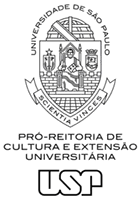|
Psicologia USP is based on American Psychological Association Manual (APA, 6th edition, 2010) regarding citations and references. All papers must be in accordance with the following information.
The presentation of manuscripts should follow the following sequence:
Format: the contributions must be presented in ".doc" or ".docx" extension, font Times New Roman, body 12, page size A4 (21.0 for 29.7 cm), double lining space, margins of 2.5 cm, limited to 50.000 (fifty thousand) characters with spaces, including all versions of abstract.
Cover Page without Identification: must present only the title of the work in Portuguese, English, Spanish and French. The "Full Sheet without Identification" must present only the title of the work in Portuguese, English, Spanish and French. This approach aims to ensure that the title page fulfills its purpose of clearly and concisely identifying the article without disclosing any additional information. The cover sheet must be in the same file as the article, contain only the titles and no other content, such as abstracts and keywords.
Section labels: Section labels, such as "Summary" and "References," should be centered and bolded.
Abstracts: The first line of the abstract must be aligned to the left (no indentation), must contain a maximum of 150 words and be presented in Portuguese, English (abstract), Spanish (resumen) and French (résumé), the first line of the abstract must be level to the left (without indentation). Avoid citations, acronyms and abbreviations. The abstract in Portuguese must be entered in the Abstract field during the submission process (step 1).
Keywords: there must be a maximum of five, just below each of the abstracts, in the versions: Portuguese (Keywords), Spanish (Palabras-clave), English (Keywords) and French (Mots-clés). The terms in Portuguese must be selected from the list of keywords present in the electronic submission system and translated into English, Spanish and French.
Headings: Level 1 headings should be centered (and bolded) and level 2 and 3 headings should be left-aligned (and bold or italic, respectively). Level 4 and 5 headings are indented like normal paragraphs.
Text: Align the text of an APA-style document to the left margin, and thefirst line of each paragraph of the text 1.27 cm (0.5 in) from the left margin. All works cited in the text must be in accordance with the information presented below, both direct quotations (textual transcription of words or excerpts from the work of the consulted author) and indirect (transcription of ideas based on the work of the consulted author).
Some Latin expressions, such as idem (id.), ibidem (ibid), opus citatum (op. cit.) are not accepted by the journal.
It is the author's responsibility the correct presentation and accuracy of the citations in the text. Every work cited in the text should be set out in the references.
Citation of author in the text
The citations must be elaborated according to the author-date system. This demands that the author's surname and the publishing date of the work being cited be inserted in the text, in appropriate place, according to the following information:
- If the author appears as part of the narrative, just the year is cited in parenthesis. In other cases, the surname and the year are cited, separated by comma, in parenthesis.
Examples:
Saussure (1995) defines the linguistic sign as...
This is roughly the basal logic of psychoanalysis (Roussillon, 1999).
- When the year and the author are presented as part of the narrative, no information should be presented in parenthesis.
Example:
In 2007, Santos contradicted this statement...
- Within the same paragraph, when the author is part of the narrative, do not include the year in all citations. Include the year only when the citation is in parentheses. Example:
Potter (1991) says that we can understand memory... Thus, Potter's first explication for the process of forgetting... today (Potter, 1991).
- For work with two authors: Ades and Botelho (1993) or (Ades & Botelho, 1993).
- in the case of citations with three to five authors, in the first time they appear in the text all the authors are cited; in the following citations, the surname of the first author is succeeded by the expression "et al.". Examples: Haase, Diniz, and Cruz, 1997 or (Haase, Diniz, & Cruz, 1997). In the following citations: Haase et al. (1997) or (Hasse et al., 1997). In the final list of references the names of all the authors must be cited.
- In the case of citations with six or more authors, it is presented the surname of the first author followed by the expression "et al.". Example: Hays et al. (2002). In the final list of references the names of the first six authors is followed by suspension points and the name of the last author.
- In citations of various authors and one same idea, one must obey to alphabetical order of surnames. Examples: Badaines (1976), Biller (1968, 1969O) or (Badaine, 1976; Biller, 1968, 1969).
- In the case of documents with different date of publishing and one same author, one cites the surname of the author and the years of publishing in chronological order. Example: Merleau-Ponty (1942, 1960, 1966).
- In citations of distinct words, but with the same publishing date and same author, lower case letters must be added after the year of publishing. Example: Rogers (1973a, 1973b, 1973c).
- In documents whose author is a collective entity, the entry must be made by the entity's name in full, followed by the year of publishing. Example: American Psychological Association (2001) or (American Psychological Association, 2001).
Citation of old and reissued works
- Mark the date of the original publication followed by the date of the edition consulted.
Examples: Freud (1898/1976) or (Freud, 1898/1976).
Direct or textual citation
- The literal transcription of a text must appear between double quotes, followed by the author’s surname, date and page of citation. Example: According to Freitas (2002), the "individuals represent the reality from the condition in which they live" (p. 75). The spelling and punctuation of a textual citation must obey to those used by the author of the cited document.
- Don't use quotation marks to include a quote in an excerpt. Start an excerpt quote on a new line and indent the entire snippet by 1.27 cm (0.5 in) from the left margin. Give a double space throughout the quote in excerpt. Don't add extra space before or after it. If there are additional paragraphs within the citation, indent the first line of each subsequent paragraph by another 1.27 cm (0.5 in). Either (a) cite the source in parentheses after the final score of the citation or (b) cite the author and year in the narrative before the citation and put only the page number in parentheses after the final score of the citation. Do not add a period after the closing parenthesis in either case.
- In the citation of a testimony or the transcription of an interview, the text must be presented italicized and following the above orientation for textual citation.
For other examples we recommend the APA Style Manual or the APA site: www.apa.org
Footnotes
- Footnotes must be avoided whenever possible. However, when presented in the body of text they must be indicated with Arabic numerals, immediately after the sentence with which they relate. They are presented at the bottom of the same page. The references of works cited in the text should be recorded at the end of the text and not in footnotes.
References: they must be presented at the end of the text. The list of references must start on a new page separate from the text. The title of this page should read "References" and should be centered at the top of the page. The word "References" must be in bold. Do not underline or use quotation marks for the title. All text should be double-spaced, just like the rest of your essay. In addition, each entry in your reference list must be indented fractionally by 0.5 inches (1.27 cm) from the left margin. Its disposition obeys to alphabetical order of the author last name and it is constituted of a list entitled "References". In the case of more than a work by the same author, the references should be arranged in chronological order of publication. Examples:
Books
American Psychological Association. (2001). Publication manual of the American Psychological Association (5th ed). Washington, DC: Author.
Bosi, E. (1994). Memória e sociedade: lembranças de velhos (4a ed.). São Paulo, SP: Companhia das Letras.
Book chapter
Chauí, M. (1998). Notas sobre cultura popular. In P. S. Oliveira (Org.), Metodologia das ciências humanas (pp. 165-182). São Paulo, SP: Hucitec.
Book chapter with indication of first edition date
Freud, S. (1977). Histeria. In S. Freud, Edição standard brasileira das obras psicológicas completas de Sigmund Freud (J. Salomão, trad., Vol. 1, pp. 77-102). Rio de Janeiro, RJ: Imago. (Trabalho original publicado em 1888)
Journal article
Tfouni, L. V., & Moraes, J. (2003). A família narrada por crianças e adolescentes de rua: a ficção como suporte do desejo. Psicologia USP, 14(1), 65-84. doi: 10.1590/S0103-65642003000100005
Castilho, G., & Bastos, A. (2013). A função constitutiva do luto na estruturação do desejo. Estilos da Clínica, 18(1), 89-106. Recuperado de http://pepsic.bvsalud.org/pdf/estic/v18n1/a06v18n1.pdf
Scientific meetings
Thiers, V. O., Seabra, A. G., Macedo, E. C., Arbex, S. M., Feitosa, M. D., & Capovilla, F. C. (1993). PCS-Comp: Picture Communication Symbols System: versão computadorizada. In Resumos de Comunicações Científicas, III Congresso Interno do Núcleo de Pesquisa em Neurociências e Comportamento da Universidade de São Paulo (p. 15). São Paulo, SP: Instituto de Ciências Biomédicas da Universidade de São Paulo.
Master's dissertations and doctoral thesis
Figueiredo, S. M. A. (1991). Estudos piagetianos: uma análise crítica (Dissertação de Mestrado). Instituto Superior de Estudos e Pesquisas Psicossociais, Fundação Getúlio Vargas, Rio de Janeiro.
Granja, E. C. (1995). Produção científica: dissertações e teses do IPUSP (1980/1989) (Tese de Doutorado). Instituto de Psicologia, Universidade de São Paulo, São Paulo.
For other examples we recommend consulting the American Psychological Association Publication Manual or the APA website: www.apa.org.br
Tables: they must be presented in separate archives, numbered consecutively with Arabic numerals in the order they were mentioned in text. The word "table" must bring a brief title that explains the data in it. When extracted of other works the author of the article must mention the complete source of where it was extracted; in this case, the author must also send in the moment of the submission the authorization for the table's republication.
Figures: Images, illustrations, photos, graphics etc. are considered figures. They must be submitted in separate archives and the authors must indicate in the text where the figures must appear. They must have good graphic quality and a maximum size of 100x150mm. They can suffer reduction, for what we suggest they are submitted in extension TIFF. If the figures submitted have already been published, it is mandatory to mention the source and the permission to reproduction.
Files containing tables and figures must be attached during the online submission process (step 5: File Upload)
|




